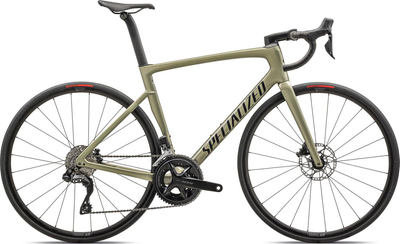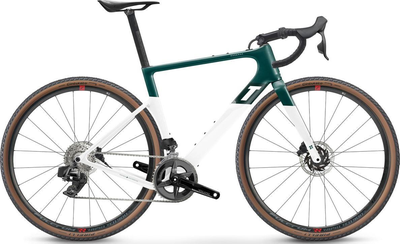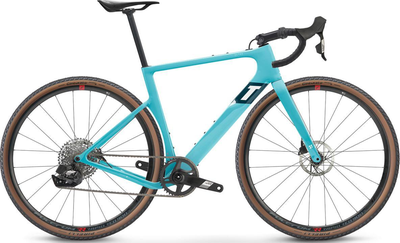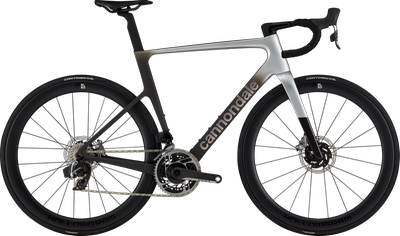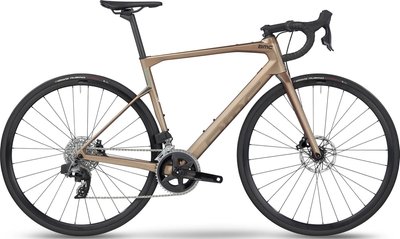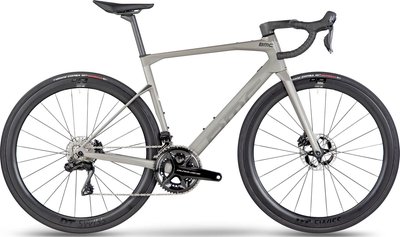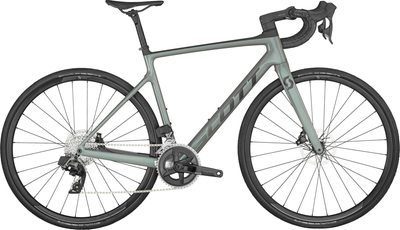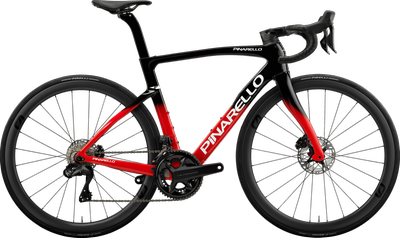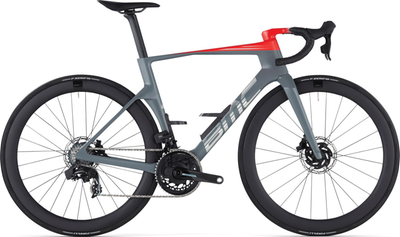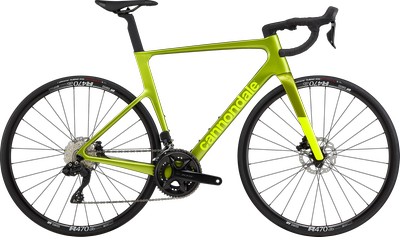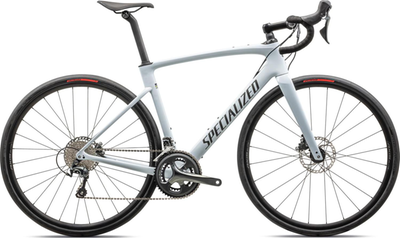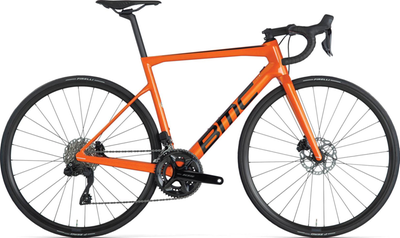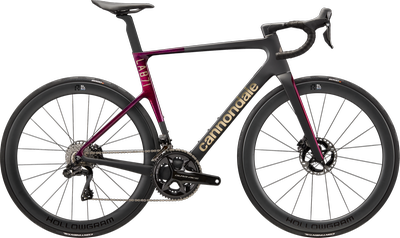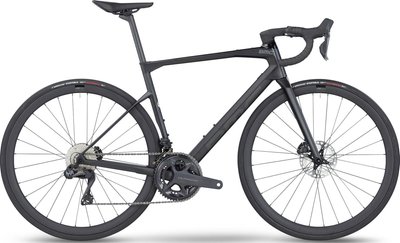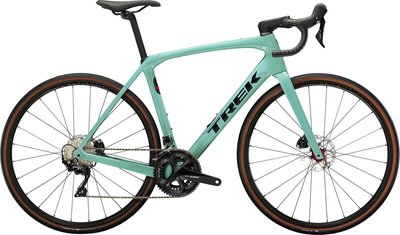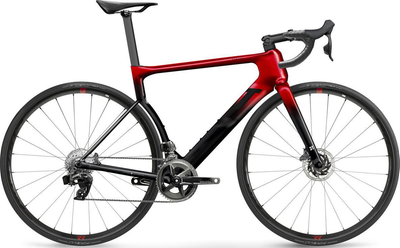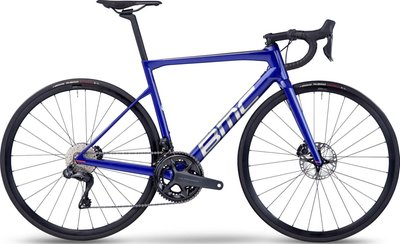Carbon Road Bikes
218 Results
The Ultimate Guide to Choosing the Best Carbon Road Bike
If you’re thinking about getting a carbon road bike, you’re in for an exciting ride - literally! Carbon fiber road bikes have become incredibly popular among cycling enthusiasts, and it’s not hard to see why. With their lightweight frames, aerodynamic shapes, and impressive durability, carbon road bikes give you a smooth, fast, and responsive ride that’s hard to beat. But before you dive into this investment, it’s worth learning a bit about what makes these bikes special and how to pick the best one for you.In this guide, we’ll cover everything you need to know about road bikes made from carbon, including how they’re constructed, what sets them apart, and tips for finding the perfect model to match your riding style. Let’s jump in and explore why carbon fiber is the go-to material for road bike frames, and how you can make the right choice for your next ride!
Why Choose a Carbon Road Bike?
So, why are so many cyclists obsessed with carbon road bikes? Carbon fiber has some unique properties that make it an ideal material for bike frames. First off, carbon is extremely lightweight. Compared to aluminum or steel frames, carbon fiber is much lighter, which makes a huge difference on long rides or steep climbs. If you’re looking for a road bike that won’t weigh you down, carbon is a great option.
On top of that, carbon fiber offers excellent vibration damping. This means that when you’re riding on rough roads, a carbon frame can absorb more of the shock, giving you a smoother ride. This is especially helpful if you’re planning on spending long hours on the road or hitting high speeds, as it reduces fatigue and keeps you comfortable. Plus, carbon can be shaped in ways other materials can’t, which allows manufacturers to create aerodynamic designs that cut through the wind with ease.
How Are Carbon Road Bikes Made?
Understanding how carbon road bikes are made can give you a clearer idea of what you’re getting when you invest in one. Carbon fiber is made from thin strands of carbon, which are woven together and set in resin to create sheets. These sheets are then layered in a specific pattern to form the frame of the bike. The pattern and direction of these layers play a huge role in how the bike performs, affecting its stiffness, durability, and flexibility.
Each brand has its own method for creating carbon frames, which is why you’ll see some variation in quality and feel across different models. For example, Trek’s carbon road bikes are known for their cutting-edge manufacturing techniques that focus on balancing weight and stiffness. This is why a road bike carbon Trek model might feel different than one from another brand, even if they’re both made from carbon fiber.
Key Benefits of Carbon Fiber Road Bikes
Let’s break down some of the main benefits of choosing a road bike with a carbon frame:
Lightweight – Carbon fiber is incredibly light, making it easier to climb hills and accelerate quickly.
Comfortable Ride – Carbon absorbs road vibrations, giving you a smoother experience on bumpy roads.
Aerodynamic Design – The flexibility of carbon allows for frame shapes that reduce wind resistance, helping you go faster with less effort.
Durability – High-quality carbon fiber can last for years if properly cared for, making it a solid long-term investment.
Customizable Feel – The layering process allows manufacturers to tweak the bike’s stiffness and responsiveness to suit different riding styles.
Factors to Consider When Buying a Carbon Road Bike
Now that you know the basics, let’s get into the specifics of what to look for when choosing a carbon road bike.
Frame Quality and Weight
Not all carbon frames are created equal. Higher-quality carbon fiber is usually lighter and offers a better ride quality, but it also comes at a higher price. Some bikes use a blend of carbon types to balance weight, strength, and cost, so it’s worth asking about the frame construction when you’re shopping around. For instance, some high-end models may use “high-modulus” carbon, which is lighter and stiffer but more fragile in case of impact.
Geometry and Fit
Fit is one of the most important factors in choosing a road bike, and it can be especially crucial with carbon road bikes because they’re designed to maximize performance. Make sure to get a bike that suits your body size and riding style. A race-oriented geometry will position you lower and more forward for aerodynamics, while endurance-focused bikes have a more relaxed geometry for comfort over long distances.
Components and Groupset
The groupset, or the collection of parts that make up your bike’s drivetrain and brakes, is another key area to consider. Carbon bikes often come with higher-end components to match the performance of the frame. Shimano and SRAM are popular groupset choices on carbon road bikes, with options ranging from entry-level to pro-grade setups. While these add to the overall cost, they can significantly enhance your bike’s performance.
Wheels and Tires
Many carbon road bikes come equipped with carbon or high-quality alloy wheels. Carbon wheels reduce weight and improve aerodynamics, but they’re usually pricier. Tire choice is also important; wider tires offer better grip and comfort, while thinner tires are more aerodynamic and faster on smooth roads. Some bikes are compatible with tubeless tires, which can reduce the risk of flats and improve comfort on rougher surfaces.
Top Brands and Models to Consider
With so many options on the market, it can be hard to know where to start. Here’s a quick look at some of the top brands and models in the carbon road bike category:
Trek Emonda: Known for its lightweight frame and race-ready design, the Emonda is a favorite among climbers and speed enthusiasts. This is a top choice if you’re looking for a road bike carbon Trek model.
Specialized Tarmac: This bike is built for speed and precision, offering a blend of lightweight construction and stiffness for explosive performance.
Cannondale SuperSix Evo: Another great option, known for its balance of comfort and speed, making it ideal for both races and long rides.
Giant TCR Advanced: A highly versatile option that combines performance and affordability, making it a solid choice for riders of all levels.
Is a Carbon Road Bike Worth the Investment?
A carbon road bike is a significant investment, but if you’re serious about cycling, it’s one worth considering. The lightweight frame, comfort on long rides, and potential for high speeds make carbon a favorite among avid riders. Plus, as the technology becomes more widespread, prices for carbon road bikes have started to come down, making them more accessible than ever.
If you’re just getting into road biking, it’s also worth noting that many brands offer entry-level carbon models that give you the benefits of carbon without the hefty price tag. These can be a great option if you’re not quite ready to splurge on a top-tier model but still want to experience what a carbon bike has to offer.
FAQs on Carbon Road Bikes
1. How durable is a carbon road bike?
Carbon road bikes are very durable if properly cared for. Carbon fiber is tough and can withstand regular use, but it’s less impact-resistant than metal, so avoid crashes and heavy impacts.
2. Are carbon road bikes comfortable for long rides?
Yes, carbon bikes are known for their vibration-damping properties, making them comfortable on long rides by reducing road shock and fatigue.
3. Can I use a carbon road bike for racing?
Absolutely! Many racers prefer carbon road bikes for their lightweight frames and responsive handling. Look for a model with a race-oriented geometry if you plan on competing.
4. What’s the difference between carbon and aluminum road bikes?
Carbon bikes are lighter, more vibration-resistant, and often more aerodynamic, while aluminum bikes are generally more affordable and durable against impact.
5. Do I need special maintenance for a carbon road bike?
Carbon bikes don’t require much extra maintenance, but it’s important to avoid overtightening bolts and use a torque wrench for adjustments.

